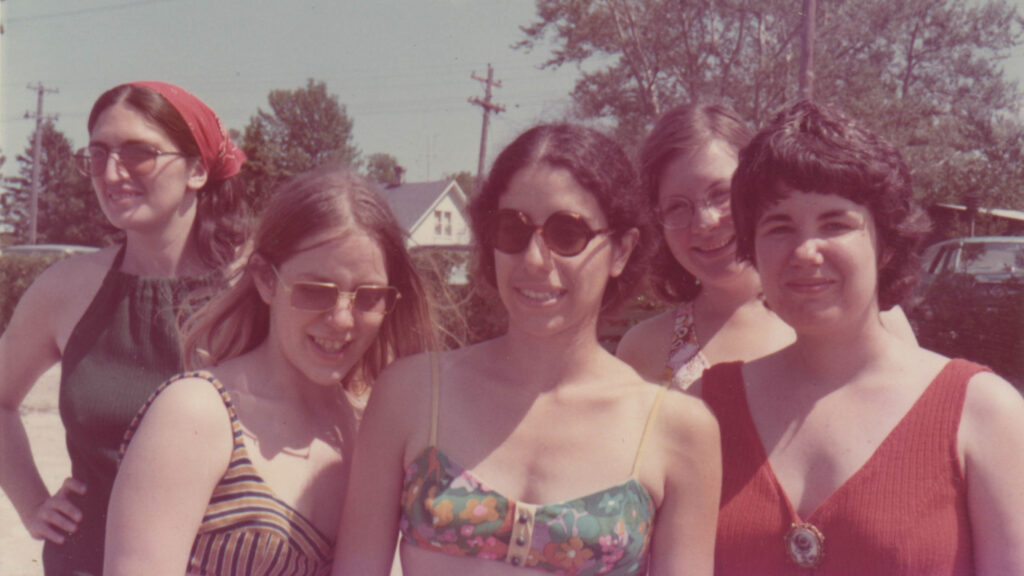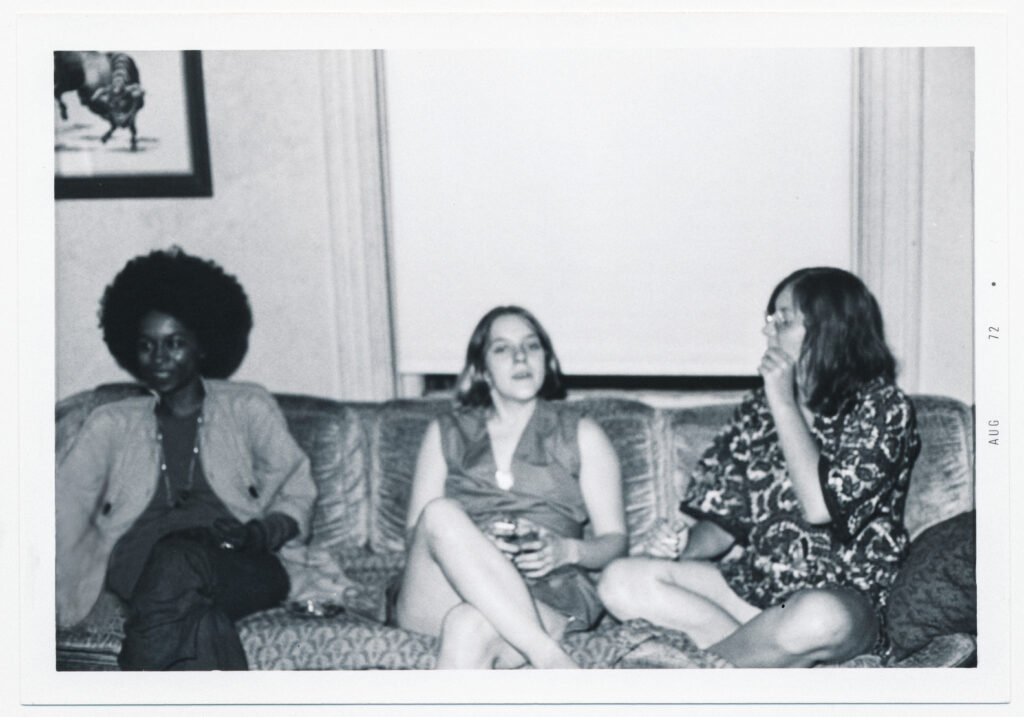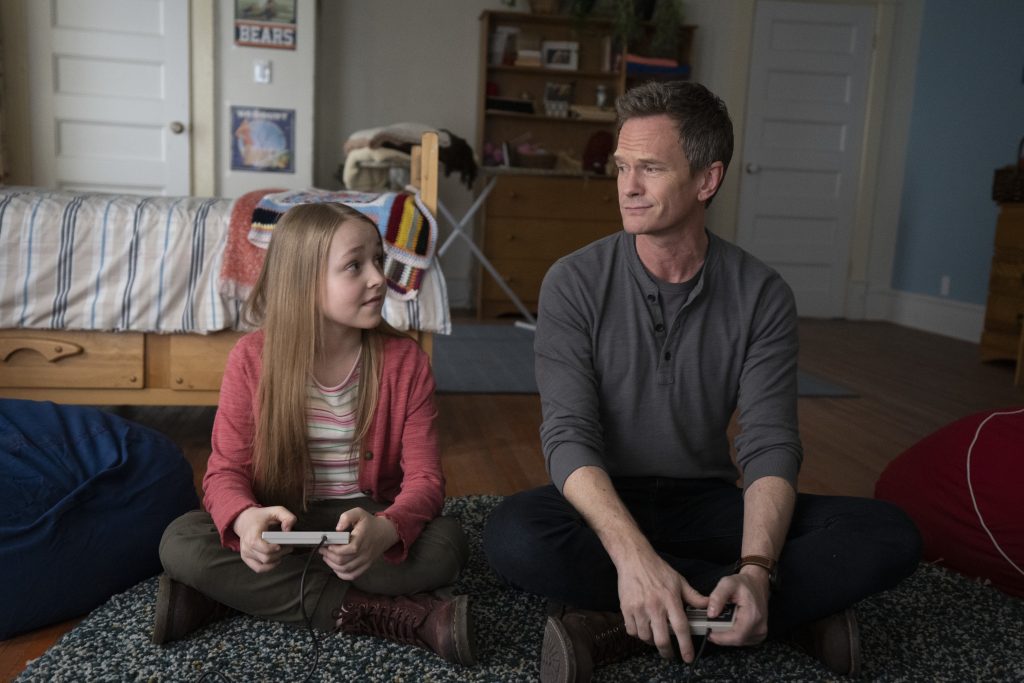May 14, 2023
by Carla Hay

Directed by W. Kamau Bell
Culture Representation: Taking place in the San Francisco Bay Area, the documentary film “1000% Me: Growing Up Mixed” features a racially diverse group of middle-class family members discussing what it’s like to be in multiracial families.
Culture Clash: Mixed-race children experience issues such as racism and pressure to identify with one race over another.
Culture Audience: “1000% Me: Growing Up Mixed” will appeal primarily to people who want to see a documentary about multiracial families, although the movie is admittedly limited to the director W. Kamau Bell’s circle of friends and family members.

The insightful documentary “1000% Me: Growing Up Mixed” has wonderfully thoughtful groups of multiracial people and some of their families candidly sharing their stories. “1000% Me: Growing Up Mixed” director/executive producer W. Kamau Bell, who has biracial children, briefly narrates the movie and can be heard off-camera asking some of the interview questions. Bell tells viewers up front that he mostly interviewed members of his family and his social circle in the politically liberal San Francisco Bay Area. All of the interviewees, except for Bell’s family members, do not have their last names revealed in the documentary. John Legend, who is also a father of multiracial children, is one of the other executive producers of the documentary, but Legend and his family are not in this movie.
The biggest drawback to this one-hour documentary is that there could have been more variety in the socioeconomic statuses and residencies of the interviewees. The people who are interviewed clearly have the privilege of being educated and living in an area where there are numerous interracial families. However, these advantages don’t mean that their stories are less valid or less meaningful, or that they don’t experience racism and other ignorance that all multiracial families experience at one time or another.
W. Kamau Bell (who is African American) and his wife Melissa (who is white), who have been married since 2009, have three daughters: Sami, Juno and Asha. Their eldest daughter Sami (who was 10 years old when she was interviewed for the documentary) and middle daughter Juno (who was 7 years old) have obviously been taught well about what to say about living life in a multiracial family. Like all of the kids in the documentary, they are intelligent, articulate and empathetic when it comes to race and social issues.
Juno says she wasn’t aware of how many people expect her to identify as only one race until a girl at her school incorrectly told Juno that Juno is white. Juno said she felt sad that one of her races wasn’t acknowledged. It’s a challenge that all the mixed-race interviewees say that they’ve experienced at some point in their lives: people expecting multiracial people to prefer or identify with one race over another. And those expectations don’t always come from outsiders. They often come from within a family or from multiracial people themselves.
The good news for multiracial families that is there is now more awareness and tolerance for people’s mixed-race identities, compared to previous decades, when it comes to checking racial identity boxes on documents. In the past, the box would often just say “other” for multiracial people. Now, the box is more likely to say “mixed-race” or “multiracial.”
Myles, an 11-year-old interviewee whose father is African American and whose mother is Filipina, has a brother named Georgio, who is 22 years older than Myles. Georgio and Myles, who both love to play basketball, are interviewed separately and together in the film. Georgio says that when he was Myles’ age, there weren’t as many resources and information for mixed-race people as there are now. “I’m glad that space is there,” Georgio comments about this cultural shift in American society that makes more room for multiracial people.
Georgio also says that where a mixed-race child goes to school can make a big difference in that person’s self-esteem and views of the world. Georgio remembers that when he was in elementary school, he was one of only a few kids in the school who had being black as part of their racial identities, so he identified more as Filipino, because he felt he would be more accepted that way. Georgio’s middle school had many more black students than his elementary school did, but Georgio says he wasn’t fully accepted by black people at the middle school because the black people thought Georgio wasn’t “black enough.” Georgio says he found acceptance and comfort by being on the school’s basketball team, but the racism he experienced still had an effect on him.
One of the best things about “1000% Me” is that it acknowledges the harsh reality that people of color are often judged in terms of a warped racial hierarchy, where certain non-white races are considered “better” than others. An example is a story told by Kaylin, a 16-year-old girl who identifies as black, white and Korean. Her parents are also mixed-race.
Kaylin’s mother has African American as part of her racial identity. Kaylin confesses that her mother won’t like it that Kaylin is sharing this family secret in the documentary, but she says that when her mother filled out the racial identity part of Kaylin’s school application, her mother only identified Kaylin as white and Asian, not as black. Kaylin’s mother is not interviewed in the documentary, but Kaylin’s guidance counselor uncle Greg is interviewed, because he and Kaylin have a close relationship. Greg says his white mother never liked to talk about race.
Kaylin says she felt very hurt at the time she found out that that her own mother was denying that Kaylin is partially black. But now, Kaylin says she understands why her mother did that: Because of black people’s history of enslavement and other oppression in America, Kaylin thinks her mother wanted to protect Kaylin from the racists who think black people are the lowest of all the races. It’s a pathetically racist mindset to rank one race as better than another, but it’s unfortunately true, if you look at how many people don’t have a problem interacting with any race except black people.
And oftentimes, white supremacy is internalized by people of color who want to look as white as possible in order to be accepted. Paolo (who is a Filipino immigrant) and his white American wife Jenn met through their mutual passion for motorcycle riding. They have a daughter named Presley (named after Elvis Presley), who loves to sing (she rides with her father on his karaoke motorcycle), play bass guitar and play volleyball. All three family members are interviewed in the documentary.
Paolo says that when he was growing up in the Philippines, he was taught not to get too tan because he was told that it was desirable to have the lightest skin tone possible. When he moved to America as a child, he only wanted to be friends with white people, because he thought it would make his life easier. Paolo says that it wasn’t until after Donald Trump was elected president of the U.S. that Paolo started to embrace his Filipino identity. Paolo comments that this awakening was a reaction to Trump’s anti-immigrant rhetoric and policies, which disproportionately targeted non-white immigrants.
Speaking of immigrants in America, the documentary also addresses the issues of multiracial children who not only have more than one cultural identity but are also the children of non-English-speaking immigrants and therefore speak more than one language. Such is the case with 11-year-old Kanani. Her father Anibal is a Latino and indigenous immigrant originally from Costa Rica. Kanani’s mother Pica is a white American who was raised in the San Diego area.
Kanani and her parents, who are all interviewed in the documentary, talk about how Kanani is being raised with a strong sense of her Costa Rican heritage. Kanani says she goes to visit her father’s side of the family in Costa Rica at least twice a year, and she participates in traditional Costa Rican customs. Kanani’s parents also made the decision to teach her to speak only Spanish before she was old enough to go to school. Kanani’s parents figured that Kanani could learn English when she reached kindergarten age.
Even though the United States does not have an official language, Pica describes getting a rude awakening about the hostility that people can get in America if they don’t speak English. She said it happened when Kanani was pre-school age, and some kids around the same age got into a dispute with Kanani. One of the other kid’s mothers told Pica that the dispute wouldn’t have happened if Kanani knew how to speak English. Pica gets teary and emotional when she remembers this experience, while admitting that because she grew up as a white person in America, she wasn’t fully aware that kids who aren’t white could experience this type of racism at such an early age.
Some interracial couples give their children names that are combination of both parents’ cultural heritages. A 7-year-old girl named Sumaya and her parents Bongo (who is originally from Guinea) and her mother Joti (who is originally from India) was given a name that is a mixture of these two cultures. Bongo and Joti also have another daughter, and the spouses made the unusual decision to give the two daughters different surnames. Sumaya has Joti’s married last name, while the other daughter has Joti’s maiden last name.
Meanwhile, 10-year-old Mila’s full first name is Funmilayo. She was named after Funmilayo Ransome-Kuti, a Nigerian activist/educator. Mila’s middle name is Chow-Mei Mia’s father Bryant is an African American who grew up in Memphis, Tennessee. Mila’s mother Jidan is a Chinese American who grew up in Berkely, California. All three family members are interviewed in the movie.
Three siblings with an African American father and a Pakistani mother are interviewed in the documentary: Anisa (11 years old) and her brothers Ibrahim (13 years old) and Khalil (15 years old). All three siblings are being raised as Muslim. Anisa says she’s proud to be the only Muslim in her school class and that she enjoys wearing traditional Muslim clothing (such as a hijab) in public. Anisa says the only thing that bothers her about her family is that her brothers sometimes pick on her because she’s smaller than she is and because she’s a girl.
Another multiracial kid who’s very confident about her racial identity is Mila, who refuses to choose one race over another. Mila’s mother Jidan gets emotional when remembering how she and Bryant got into a big argument when Jidan was younger because Bryant didn’t want Jidan to go to school with mismatched socks, while Jidean didn’t think it was that big of a deal that the socks were mismatched. Bryant had to explain to Jidan that he didn’t want people at the school to think that Jidan was a black girl who wasn’t getting proper care at home.
It’s a prejudice that Bryant said he learned from experience growing up in the Deep South that could lead to bigger problems for African American kids and their parents. Jidan says it pained her to find out that something as simple as wearing mismatched socks to school could have different repercussions for black kids, compared to kids of other races. Now that Mila is older, Bryant says he’s relaxed his views on what types of socks that Mila can wear.
An interesting part of the documentary is when W. Kamau Bell’s mother Janet and Melissa Bell’s mother Chris are interviewed together about what it was like growing up in racially segregated America and what it’s like to be grandmothers of mixed-race children. A segment in the documentary shows granddaughters Sami and Juno sitting in between their grandmothers on couch. Sami explains to Juno for the first time how in their grandmother’s youth, it was legal for white people to be kept separate from all other races and to have more rights than other races. Juno is shown looking shocked that her grandmothers and other people had to live this way in America.
A mixed-race man named Roy, who says he was born in 1941, also recalls this shameful era in America. He says back then, people didn’t know what to call his racial identity except “mulatto” (which is a word he disliked), or he was simply identified as “black” or “Negro,” since he obviously wasn’t completely white.
“1000% Me” also includes mixed-race people who are adopted by white people. In the case of best friends Carter and Nola (both 13-year-old girls), they were each adopted by white lesbian couples. Carter, who is black and Latina, is W. Kamau Bell’s goddaughter. Nola is white and black. Carter says that there are racial issues that her white mothers might not fully understand, so she’s grateful that she can sometimes get support and advice from her adopted 22-year-old African American sister Olivia, who is briefly shown in the movie with Carter and Nola. As Nola says in the documentary about being a mixed-race person: “Being multiple things doesn’t make you any less of those things.”
Mixed-race people have always existed, but it’s taken a surprisingly long time for there to be a comprehensive documentary film about it. Census data statistics suggest that the numbers of mixed-race people will continue to grow in the United States. “1000% Me: Growing Up Mixed” is an admirable start to helping open up the conversation even more about mixed-race people.
Erica, who identifies as black and Japanese, is a therapist interviewed in the documentary. She has this to say about race relations in America: “We have a lot of work to do. We live in a deeply racist society … There’s a lot of danger in not talking about race.” In other words, ignoring the problem will only make it worse. “1000% Me: Growing Up Mixed” is a worthy step in the right direction to helping being a solution to the problem.
HBO and HBO Max premiered “1000% Me: Growing Up Mixed” on May 2, 2023.


































